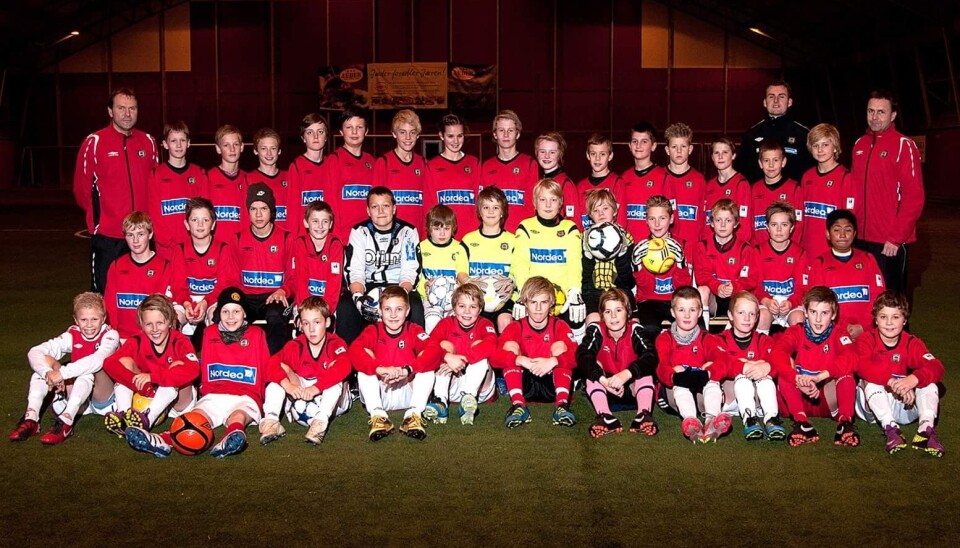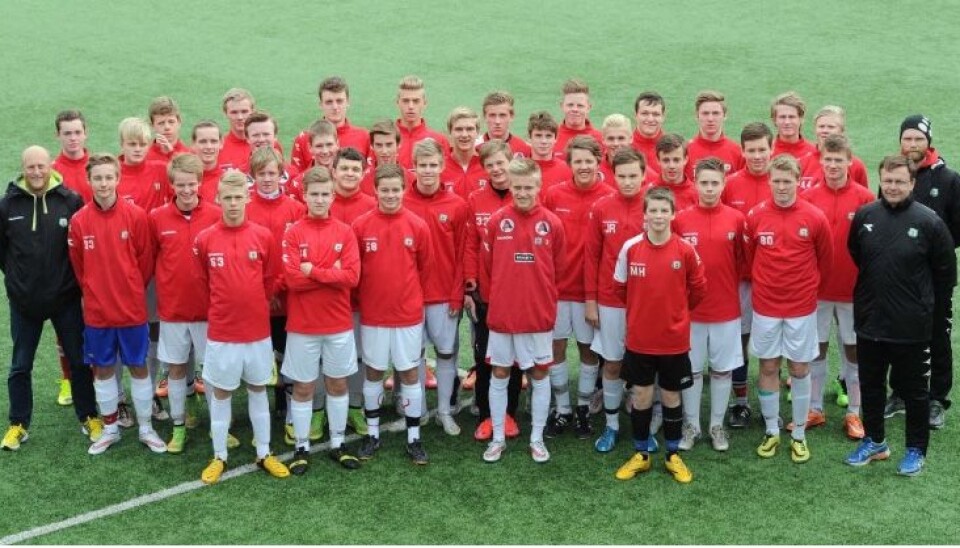THIS ARTICLE/PRESS RELEASE IS PAID FOR AND PRESENTED BY THE University of Agder - read more

Grassroots football and camaraderie created the football miracle in a small town in Norway
Erling Braut Haaland is a sensation in international football arenas. But five of his teammates from Bryne have also become professional football players.
The blonde-haired boy from Bryne, a small town in western Norway, has become a football phenomenon. And Erling Braut Haaland’s name is on everyone’s lips in European football.
“Haaland’s story is interesting in itself. And it becomes even more interesting when we know that he wasn’t alone. As many as six players from that boys’ team have become professional footballers, without this going at the expense of the broad participation of recreational players. They have obviously done something right in Bryne”, says Martin Erikstad.
Erikstad is a postdoctoral research fellow at the University of Agder (UiA). In 2019, he completed his PhD degree at UiA and defended his thesis on developing good football players.
Now he has completed another football-related study, in collaboration with research colleagues Jean Côté, Tommy Haugen, Bjørn Tore Johansen and Marius Johnsen.
The study is about the football community in Bryne, of which Håland and the five other professionals were a part. A research paper from the study was recently published in the academic journal The Sport Psychologist.
Emphasis on interaction and talent

“Grassroots football and camaraderie are some of the keys to the success in Bryne. But sensible coaches have also played an important role. The coaches have focused both on social interactions between the players and football skills development. All the players were given football challenges suited to their level”, says Erikstad.
It is worth to mention that one of the head coaches was Alf Ingve Berntsen. He played football with the boys’ and junior national teams until a knee injury put an end to his football career.
Haaland on the bench
“Berntsen and his coaching colleagues made sure that everyone on the team was seen and included. No player would sit on the bench during an entire match. The playing time was evenly distributed among all. Erling Braut Haaland also sat on the bench”, says Erikstad.
This is how the young players learned something about how interaction is about giving everyone space. At the same time, they learned something about seizing opportunities and giving the best you can. They got more involved and played more intensely and devotedly once they got onto the pitch.
Room for everyone
“The group learned that there was room for everyone. Very few of the boys left the club once they joined”, says Erikstad.
These are some of the main conclusions of the study: The team experienced low dropout rates and the focus on broad participation also produced high-performing players. They started with 40 players at age 6, at junior level they were 35. And 6 of them became professional players.
“The study shows that it is not early focus on results, selection of athletes and early specialisation that has led Haaland & co to the top. On the contrary, the focus on broad participation seems to have been positive for both the recreational players and the high performers. An added benefit of focusing on participation is precisely that the boys stayed together for many years. They developed both as football players and as individuals”, says Erikstad.
Case study on ten-year period
The case study of the Bryne football team, for boys born in 1999, is based on interviews with 10 people associated with the team over a ten-year period. The researchers interviewed four players, four parents, the coach, and the player developer at the club.
The goal has been to find out why Haaland and his teammates became such good football players, while keeping up participation levels in all the players.

“We focused on what the social dimension has meant for their success. We have looked at the interaction between the players, and between players and coaches. In addition, we examined how the training sessions were set up, and what the local football fields and sports hall have meant to the players”, says Erikstad.
Open sports hall
In Bryne, all the players had access to a sports hall. Without having to book or make any arrangements, they would meet up in Jærhallen to play football together, without a coach present.
“The open sports hall has served as a football field for the players. Free access to such facilities is really something other municipalities should consider. It has contributed to the success in Bryne at least”, says Erikstad.
The researcher points out that organised training should not be exaggerated at a young age. The study shows that the local football field, play and friendship also contribute to developing good football players.
“Haaland and his friends played organised football once or twice a week until the age of 10. They spent more time on the local field”, says Erikstad.
When the boys were divided into two teams at the age of fourteen, the players had to choose whether they wanted to train two or four to five times a week. The most eager – Haaland and his peers – chose four to five sessions a week. But the team that had two training sessions a week trained at the same time as the others. In that way, friends with different ambitions could still cycle together to football practice and share changing rooms.
Translated by: Anna Svala Johannesdottir
See more content from the University of Agder:
-
Research paved the way for better maths courses for multicultural student teachers
-
The law protects the students. What about the teachers?
-
This researcher has helped more economics students pass their maths exams
-
There are many cases of fathers and sons both reaching elite level in football. Why is that?
-
How we used plants to protect ourselves from evil
-
What is it like for nurses to promote health behind bars?




































